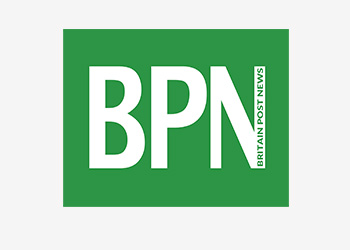Imagery is the language of our time, but we need to be responsible


At last, the unrealistic depiction of hyper-femininity that has dominated advertising may be coming to an end.
The Committees of Advertising Practice (CAP), which regulates ads in the UK, announced last week that it will implement new rules to tackle harmful gender stereotyping – including the depiction of women as bad drivers, and other outdated typecasts.
Its about time. This is 2018, a year when women are world leaders, unapologetically striving for success. The voice of women is louder than ever, with movements like #timesup highlighting inequality on a global stage.
Should it really have taken so long for brands to wake up to reality? And shouldnt they be doing this out of choice, to better connect with their audiences, rather than waiting for a slap on the wrist from the regulators?
If brand campaigns are to strike a chord with real people, they need to be able to identify with what theyre seeing. Its a simple concept, and one any marketer would agree with – which makes the industrys apparent reluctance to part with such stereotypes voluntarily all the more difficult to believe.
Where are the female doctors or male care-givers in ad campaigns? Wheres the collaboration between men and women as equals?
Imagery is the language of our time. Its an extremely powerful tool in changing perceptions, but its equally powerful in reinforcing negative ones.
Were exposed to advertising at every turn, and the restrictive, traditional images of gender that have become so ingrained in our culture are genuinely damaging.
Everyone involved in the creative process has a duty to make responsible decisions.
In recent years, the inaccurate, harmful representation of women has quite rightly remained a topic of discussion in the media. And Getty Images library provides evidence for how things have improved, with women more often portrayed as strong individuals with successful careers, alongside the more typical family-oriented images.
But, while its important that this narrative continues, it needs to happen side-by-side with a similar discourse around men.
In 2007, Getty Images top-selling photos of men were portraits of businessmen in suits, posing with their arms folded. If not depicted as the “boss”, men would be shown doing hard, physical work, or involved in sport.
These restrictive stereotypes can be as harmful and out-of-date as those that show women in the kitchen. And they have an impact.
Last week marked Mental Health Awareness Week, with charities such as CALM (the Campaign Against Living Miserably) reminding us that suicide is the number one killer of young men in the UK. It is clear that a worrying number of young men in this country do not feel secure and supported, for whatever reason, and may not be getting the help they need.
Stereotypes that perpetuate the myth that “real” men repress their emotions and do not ask for help are exacerbating the problem.
Brands and advertisers can make a real difference, by stepping back and questioning how they are representing normal people. They have a responsibility to accurately reflect society and trigger positive change, challenging stereotypes rather than fuelling them.
This isnt just about advertising – its about signalling to everyone, men and women, that they are individuals worthy of nuanced representation.
How many men in ad agency brainstorms are athletes or utterly hopeless in the kitchen? And how many women in the same meeting are simpering, submissive types?
It baffles, then, that marketers are still producing campaigns specifically reinforcing those roles.
With that in mind, its important to highlight the many brands that are challenging all this.
Lloyds Banks recent mental health campaign demonstrates that such conditions affect people in all walks of life, regardless of gender or ethnicity.
Gillettes advert to mark the launch of its new razor for assisted shaving tells the story of a man who regularly bathes and shaves his elderly father – far more relatable than the half-naked adonises were used to in grooming ads.
And while the alpha male aesthetic continues to hegemonise popular culture, today the imagery we at Getty Images see businesses purchasing is far more diverse and representative of true masculinity.
Its a good start, but still not enough. This should spark a wider conversation on diversity in general, branching out to consider how we represent people from ethnic minority backgrounds, same-sex couples, and people with disabilities – groups grossly underrepresented in advertising.
While the CAPs rules on gender should be celebrated, theres a lot more work to be done – with glaring question marks over why most brands arent coming to this decision themselves.
[contf] [contfnew] 
CityAM
[contfnewc] [contfnewc]



